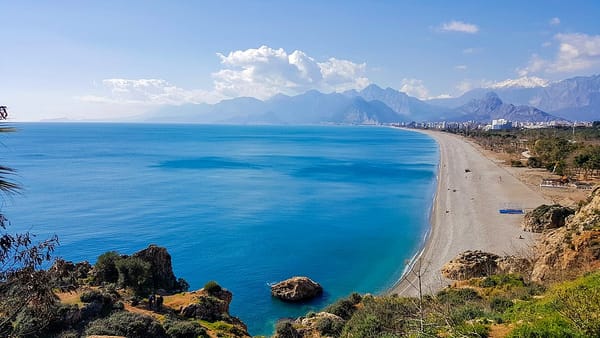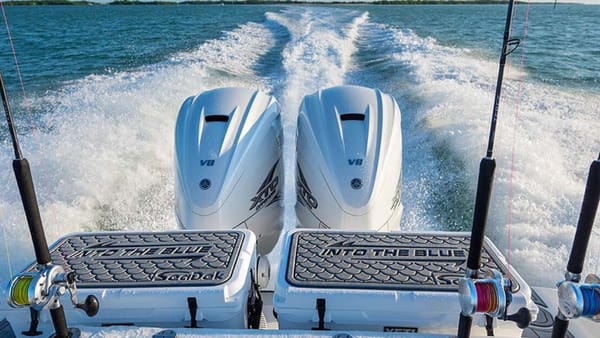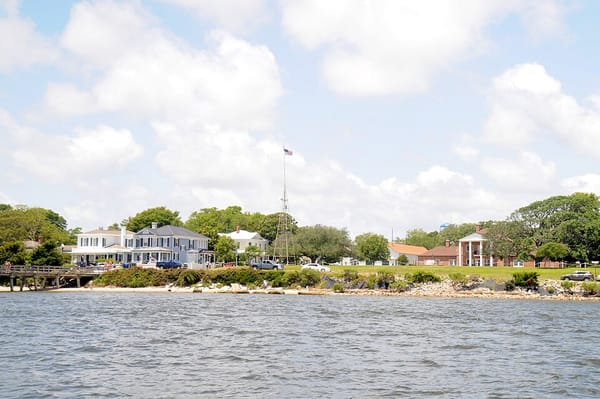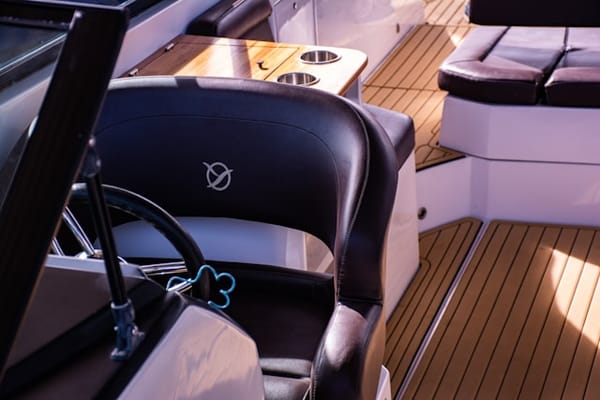Sailing Stats: Types of Sails and What they Do
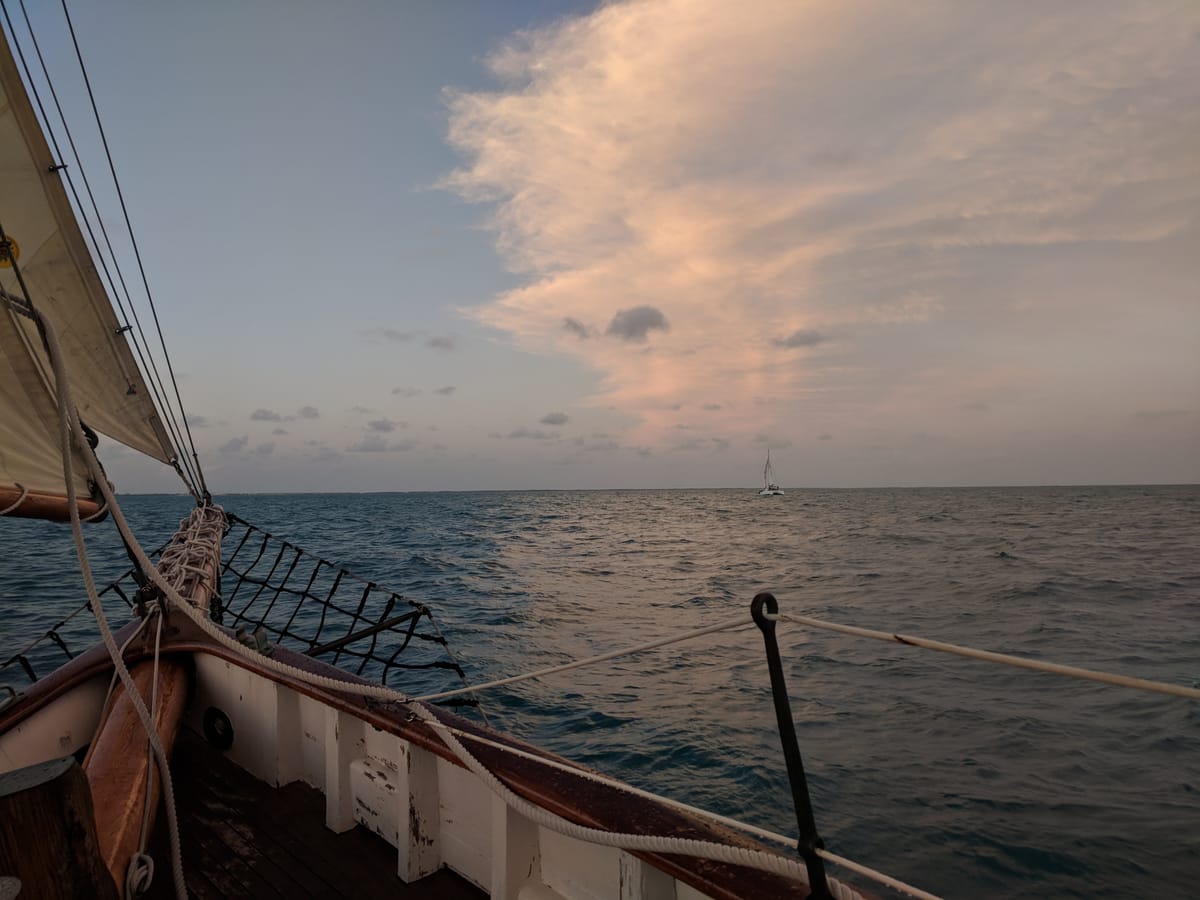
Have you ever wondered what all those different shaped sails flying on a sailboat do? While they look pretty, and all the cool ships have them, they’re not purely for looks. Just as there are a variety of sailboat makes and models floating around at the marina or private boat slip for rent, there are several types of sails. Today, we’re going to take a fun look at the various kinds of sails and what they do. We won’t get into booms, halyards and furling techniques just yet.
Getting down to the very basics, the sail is that big white or colorful piece of canvas attached to a long pole (known as the mast in sailing terms). It’s what catches the wind and propels the boat to make it move forward. If you’ve ever watched a sailing regatta or been on a catamaran in the islands, you know that they can really get the boat moving. Some sailboats do have engines, but that’s a lesson for another time.
Using the right type of sail for the right wind and weather conditions makes the trip enjoyable as well as manageable. If you want to sail upwind or downwind, you will need to use several types of sails, which could include jib, genoa, spinnaker or gennaker. Depending on the type of sailing vessel, and the weather conditions, it may have all these sails or just one or two of them.
Mainsail

The mainsail is, well, the main sail on the vessel. It’s the biggest and is attached to the mast at the back of the boat. This triangle-shaped sail is fore and aft-rigged and points toward the stern. Along with the jib, it creates lift to capture the most wind. It's one of the most common sails seen on boats at boat slip rentals.
Headsail
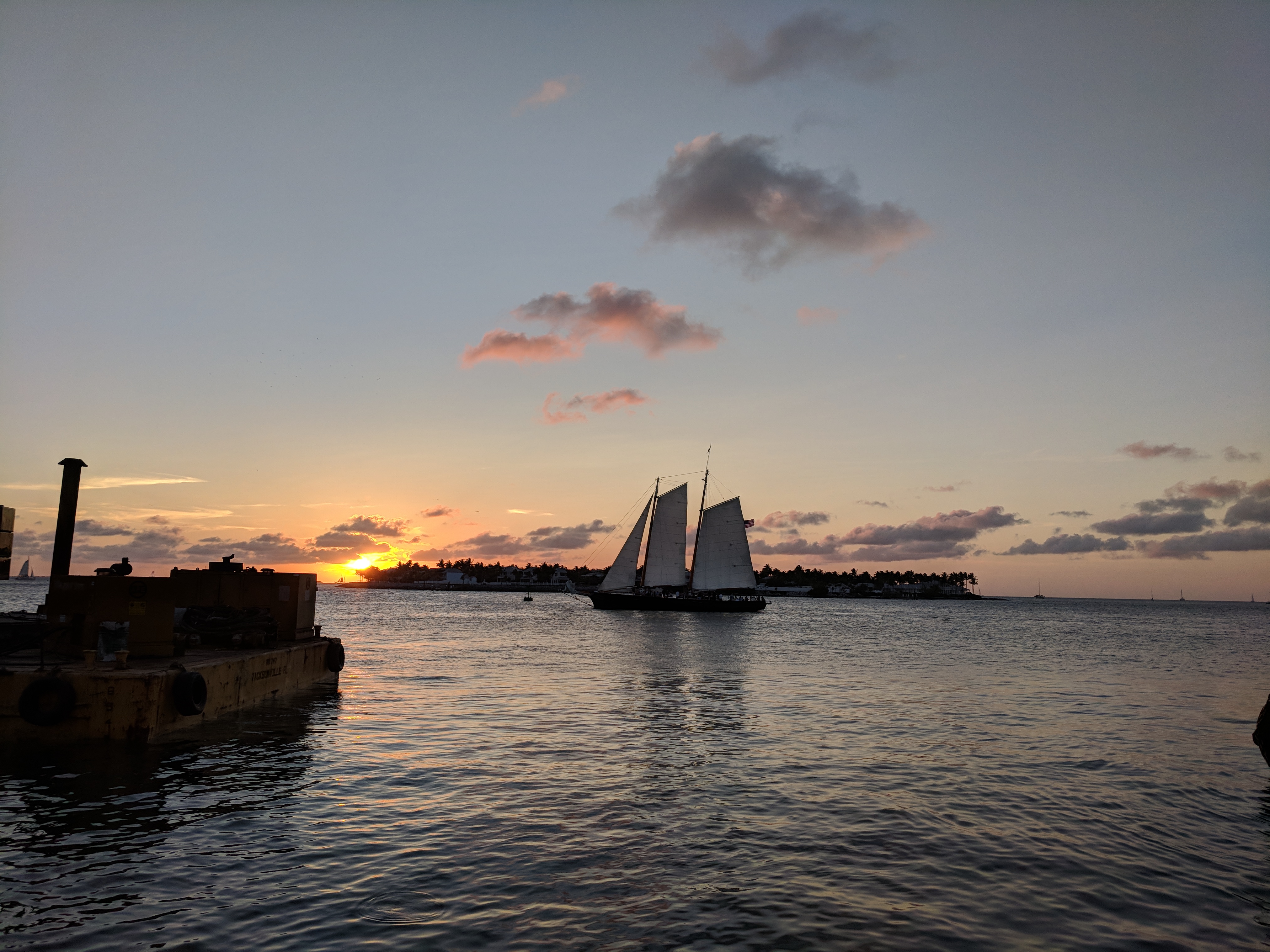
Located in front of the mainsail, the headsail connects to the bowsprit or the deck by a wire or rope to keep the sail in one position. It’s the front sail in a fore and aft rigged set-up. It could be referred to as a jib or a genoa sail depending on the shape. The headsail isn't as big as the mainsail.
Jib

Photo: Wikipedia
One of the most popular types of sail, the jib is the triangle-shaped sail set in front of the foremost sail. It doesn’t extend past the mast to the aft of the boat. Jibs break wind turbulence for the mainsail, which increases speed, performance, stability and aerodynamics of the mainsail. It’s used as the main type of headsail. In the above photo, the pink sails are jibs.
Genoa
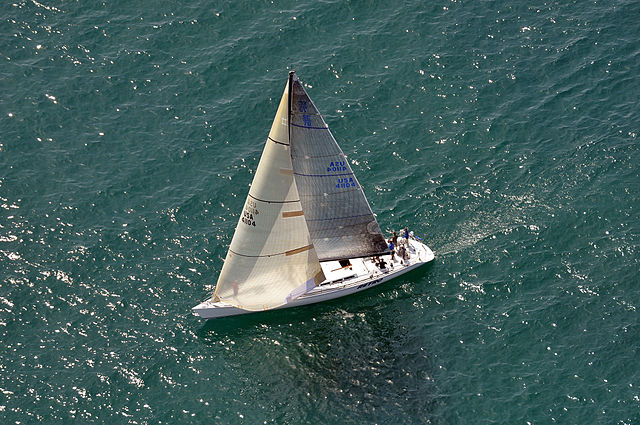
Photo: D Ramey Logan, CC BY-SA 3.0 (Wikipedia)
A genoa is basically a large jib sail. Since it overlaps the mainsail, it’s sometimes known as an overlapping jib. Genoas are often used on twin-masted boats and single-masted sloops, ketches and yawls. It’s larger than a jib and used for downwind sailing in light wind conditions. in the above photo, the genoa is the sail with the blue letters.
Spinnaker
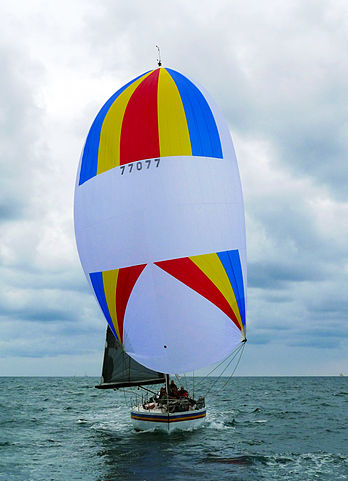
Photo: D Ramey Logan, CC BY-SA 3.0 (Wikipedia)
A spinnaker is a specialty sail for downwind use. They’re balloon-shaped and spin to go fast. They’re not used as often as other sails since they can be difficult to get the hang of. With practice, they’re quite easy to manage. Spinnakers are made of lightweight fabric that can balloon out, catch wind and look magnificent sailing across the water. Spinnakers are also called kites or chutes since they look like a parachute. There are two types of spinnaker sail: symmetric and asymmetric.
Gennaker
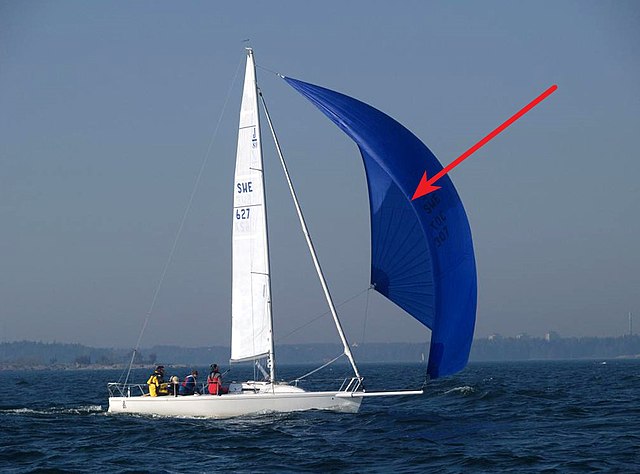
Photo: Wikimedia
A gennaker sail is a cross between a genoa and a spinnaker sail. They’re used to sail downwind. This asymmetric sail is free flying like a spinnaker but tacked to the bowsprit like a jib. They’re easier to use and less expensive than a spinnaker. Additionally, they’re less prone to collapsing in wind than a spinnaker. Gennakers are usually used on racing sailboats.
Code Zero
A code zero sail is a cross between a genoa sail and an asymmetrical spinnaker. It’s designed for extra performance in light wind. It's a great sail for a day trip from a private boat lfit for rent.
Windseeker
The windseeker sail is a tall narrow sail. It’s very lightweight and designed for drifting conditions. Use a windseeker when a full size and heavier sail won’t stay stable.
Storm Jib

Photo: Flickr/Lisa Bat/CC
A storm jib is a small jib made for stormy conditions. It’s made of heavyweight sailcloth and highly visible. It helps keep control of the vessel in severe weather, so don't leave a private boat slip for rent without one.
Trysail
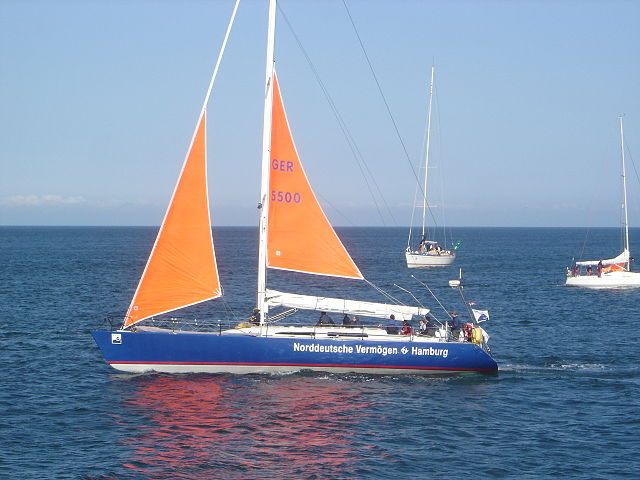
Photo: Flickr/Hein Muck/CC
The trysail is a small front and aft sail made for heavy weather. Also called a spencer, it’s bright orange and triangle shaped. Trysails are very durable and used to help the mainsail in winds over 45 knots.
It’s an art and science to trimming and choosing sails for use in the Chesapeake Bay, Bahamas or your local lake. We hope you’ve picked up a few tips on the use of sailboat sails. The next time you’re hanging at the boat dock rental or walking around a marina, you’ll know just what’s flying from all the masts!
